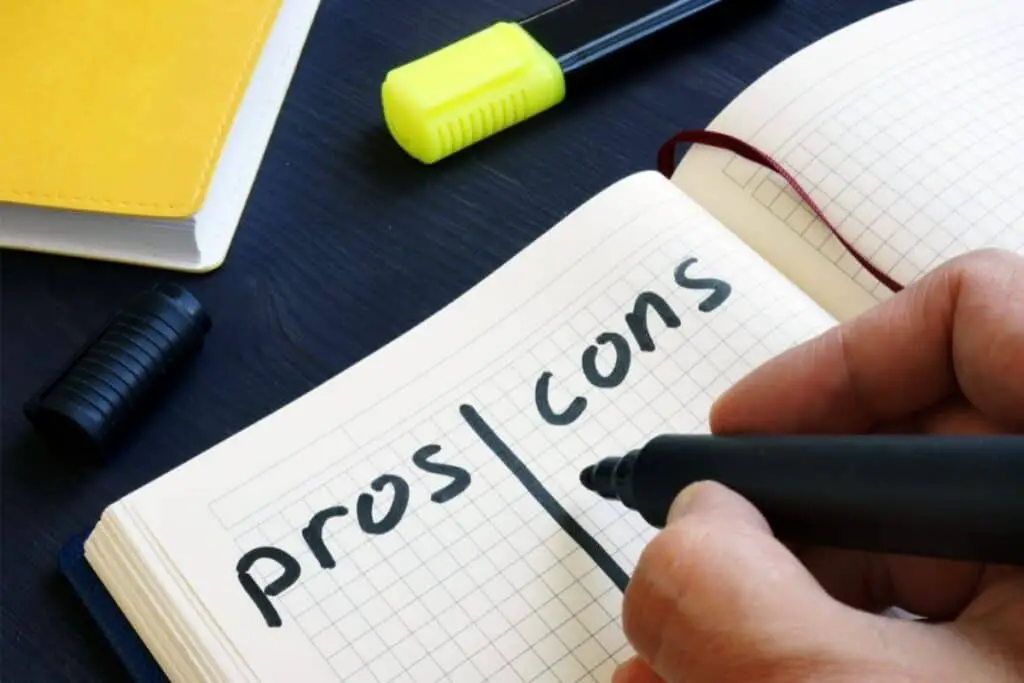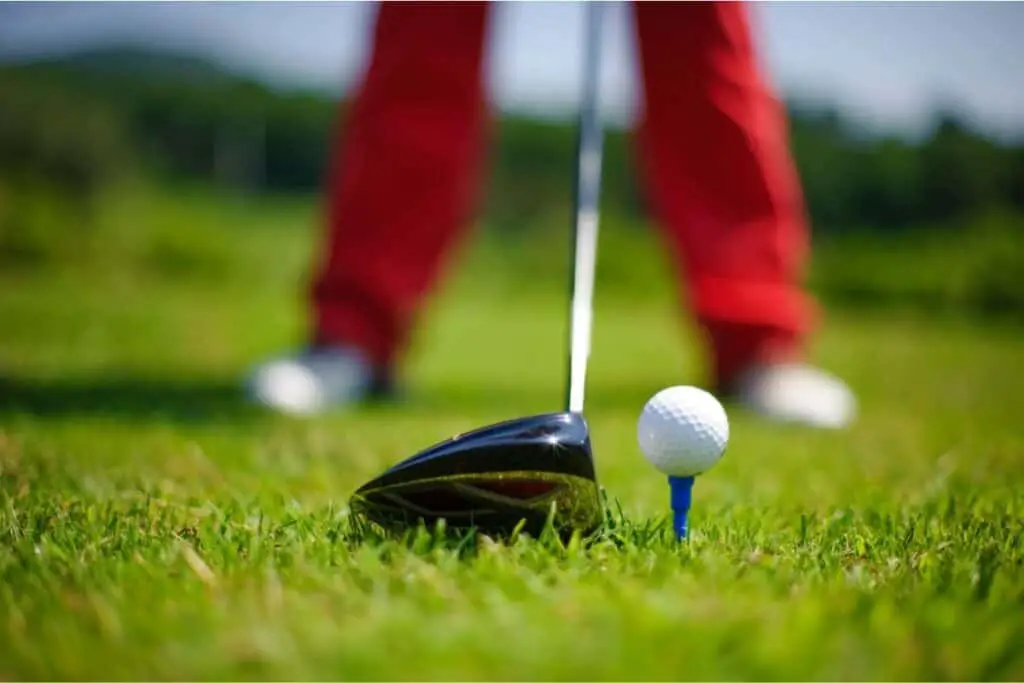Fade or Draw? The choice between fade or draw is often a matter of personal preference. Both options have their pros and cons.
In this article, we’ll explain the difference between them and give some tips on how to choose the right option.
Golfers have two main choices for putting: fade or draw. Fade puts the ball on the green at a lower angle than the target line, whereas draw puts the ball higher than the target line. This means that the ball will roll towards the hole instead of away from it.
To putt well, you should practice both options until you get comfortable with whichever one feels better for you. Once you’ve mastered the art of putting, you can start thinking about other aspects of your game.
The Pros & Cons Of Fading Vs Drawing

Both fade and draw are used by golfers all over the world. However, there are advantages and disadvantages to each method.
Here’s what you need to know before choosing which way to go.
Pros Of Fading
Fade has more control over the shot because it allows you to aim the ball anywhere along the ground. If you’re having trouble getting the ball close enough to the hole, fading may be easier for you.
You can also use fade to improve your accuracy. By aiming the ball slightly above the target line, you can make sure that the ball ends up closer to the hole.
If you want to play a fade but don’t feel confident doing so, try using a wedge instead of an iron. Wedges tend to be less forgiving than irons, so they’re perfect for practicing fades.
Cons Of Fading
If you’re not very good at hitting shots straight, you might find yourself missing the target when you fade.
If you’re not very good with distance control, you could end up going too far off the fairway if you fade.
Pros Of Drawing
Drawing gives you more control over where the ball goes. You can aim the ball anywhere along any part of the green.
Drawing also lets you hit the ball farther than you would otherwise. When you fade, your ball rolls toward the hole, making it harder to reach.
Draws are great for improving your accuracy. Aiming the ball just below the target line makes it easy to land the ball on the green.
Cons Of Drawing
Drawing isn’t as forgiving as fading. It’s possible to miss the target completely if you draw the ball too high.
When you draw, you have to work harder to keep the ball on the green, especially if you’re trying to avoid a water hazard.
How To Choose Between Fade And Draw

Once you understand the differences between fade and draw, it’s time to decide whether you’d prefer to use one technique over another. There are three factors to consider:
- Your ability to control the ball
- Your confidence level
- Your skill level
Let’s look at each of these factors in turn.
Ability To Control The Ball
The first thing you need to think about is whether you’re able to control the trajectory of the ball.
If you’re struggling to hit the ball straight, then drawing might be easier for you. On the flip side, if you’re already hitting the ball pretty well, then fading might be easier for you to do.
Confidence Level
Confidence plays a big role in determining how much control you have over the ball. A golfer who’s feeling confident will probably be able to hit the ball further than someone who doesn’t feel particularly skilled or confident.
This means that if you’re feeling nervous or unsure about your abilities, you’ll likely struggle to control the trajectory of your shot. In this case, you should choose a fade, since you won’t be able to get the ball as close to the hole as you would if you were playing confidently.
Skill Level
There are two main ways to measure skill level. One is by looking at your handicap. This tells you how many strokes you lose per 100 yards. For example, if you have a 10 handicap, you lose 10 strokes per 100 yards.
A higher handicap means that you’re better at controlling the ball.
Another way to measure skill level is by looking at your score. If you’ve been working hard to improve your game, you’ll probably be scoring lower than you did before you started.
In general, the higher your score, the better your skills are. However, there are exceptions to this rule. Some people who play golf regularly but don’t make much progress may still be able to shoot low scores.
In some cases, it’s possible to achieve a perfect score without being very good at controlling the ball. Remember that even though you’re not getting a lot of practice with your short game, you could be practicing other aspects of your game instead.
What Should I Do?
If you want to learn how to control the ball more effectively, try using different clubs from those you normally use. You can also experiment with different types of shots, such as fades, draws and slices.
If you’re having trouble keeping the ball on the fairway, try aiming slightly left or right of center.
If you’re struggling to find the sweet spot, try taking smaller steps when you swing.
If you’re finding it difficult to control the trajectory of a shot, try moving your body backwards during your backswing.
When you’re ready to start playing again, remember that the most important factor is to work on your weaknesses rather than focusing too heavily on your strengths.
How To Hit A Fade In Golf (Simple Method)
- Step 1 – Start with a normal stance.
- Step 2 – Swing through the ball so that it moves toward the target.
- Step 3 – Try to keep the clubface square to the target line.
- Step 4 – When you reach impact, let go of the club and follow the ball.
- Step 5 – Keep the clubface open until the ball leaves the face.
- Step 6 – Finish the stroke by bringing the clubhead back up to the starting position.
Tips & Tricks
You might think that a fade is just an easy shot to play, but it isn’t always that simple. There are several factors that affect the flight of a shot, including the type of club used, where the ball lies on the ground and whether it has any spin on it.
The distance between the ball and the target will determine which kind of shot you need to play. A fade requires the player to hit the ball farther away from the target than a draw does.
You’ll also need to consider the angle of attack. A fade should be played with a steeper angle of attack than a draw.
As you get closer to the target, you’ll need to adjust the amount of loft on the club. Your goal is to strike the ball with a shallow angle of attack.
As you approach the target, you’ll also need to focus on the speed of the club head. If you swing too fast, the club will move forward too quickly and won’t produce enough power.
A fade is usually easier to execute than a draw because the player doesn’t have to worry about hitting the ball straight. However, if you struggle with accuracy, you might prefer to play a draw.
How To Play A Draw In Golf (Easy Method)
- Step 1 – Start with a normal stance
- Step 2 – Take a full backswing
- Step 3 – Follow through with the club
- Step 4 – Aim the ball towards the target
- Step 5 – Bring the club down to the ball
- Step 6 – Make contact with the ball
- Step 7 – Hold the clubhead steady after impact
Tips & Tricks For Playing A Draw In Golf
Drawing the ball is one of the easiest ways to improve your golf game. It’s not only fun, but it’s also very effective at improving your overall score.
Drawing the ball means striking the ball with a shallow slope and letting gravity do the rest. This technique allows you to make clean contact with the ball without having to worry about maintaining a perfect swing path or keeping the clubface square to your intended target.
It can be challenging to learn how to play a draw, especially if you’re new to the sport. To help you out, here are some tips and tricks to use when you want to try this shot.
Start With A Full Backswing
When you first begin learning to play a draw, you’ll probably find yourself swinging the club more like a slice than a proper backswing.
You don’t want to overdo it, though. A full backswing helps you maintain control over the club as well as give you plenty of time to set up before making contact with the ball.
Aim Towards The Target
When you start playing a draw, you’ll most likely aim toward the right side of the fairway. While aiming toward the right side of your target area is fine, you’ll want to keep your eyes focused on the center of the green.
This will ensure that you make solid contact with the ball. When you look off to the side, you run the risk of missing the ball completely.
Make Sure You Keep The Clubface Square
If you’re trying to play a draw, it’s important to keep the face of your driver square to the target line. Otherwise, you could end up slicing the ball instead of drawing it.
Hold Steady After Impact
After you’ve made contact with the ball, you’ll want to hold the club firmly against your body until the ball stops rolling. This keeps you from moving around while you wait for the ball to stop bouncing.
You may also notice that you tend to pull the club away from your body as soon as you hit the ball. Don’t worry about this; just let the weight of the club take care of itself.
Golf is an amazing sport where you get to enjoy the outdoors while competing against other players. But there’s no denying the fact that golf requires a lot of practice and dedication.
With all these factors in mind, we hope that our guide has helped you understand how to play a draw better.
Conclusion
Playing a draw is a great way to improve your golf game because it allows you to focus on making good shots rather than worrying about your swing path.
If you follow the steps above, you should have no problem getting into the swing of things.
- Should Tee Boxes Be Level? - January 23, 2024
- 3 Hybrid Distance - November 15, 2023
- Innovations in Golf Mobility: An In-depth Review of Top Golf Scooters - October 12, 2023

